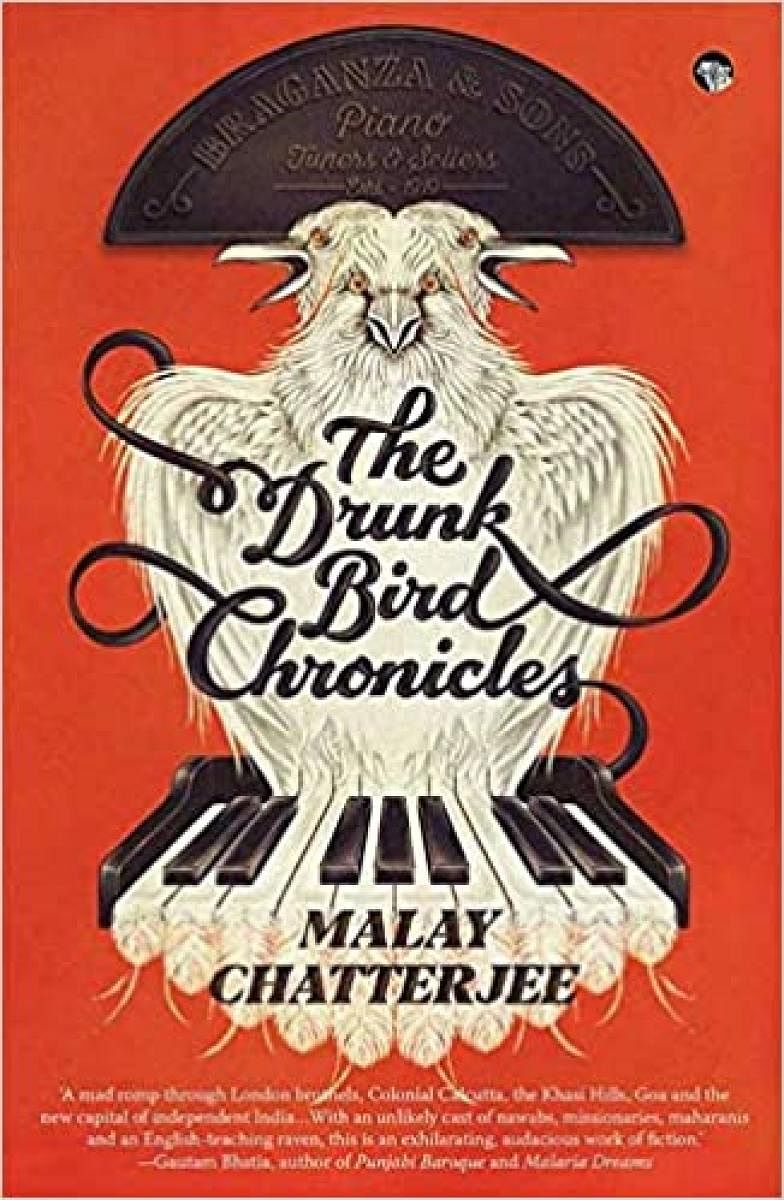
Even though the title sounds a lot like the famed Murakami novel, The Drunk Bird Chronicles is nothing like it. For one, it doesn’t, at any moment, allude to desire or self-realisation.
However, The Drunk Bird Chronicles does read a lot like so many other famous literary works. Into the prologue, it calls to mind One Hundred Years of Solitude as it starts with the death of the family patriarch. The next few pages reads like the Sea of Poppies, minus the angst. At other times, wisps of A Passage to India float through.
Instances of similarities with other books, or a sense of déjà vu, would usually put a dampener on most books, but not this debut by Malay Chatterjee. No matter how many books The Drunk Bird Chronicles might read like, there is a sense of the farcical —in a good way —that makes it a page-turner. The exaggerated situations described in the book, in fact, make the book much more entertaining than, say, a work by Garcia Marquez or Murakami.
Another advantage of The Drunk Bird Chronicles is that it cannot be categorised into any one genre — there is comedy, there is history, there is fiction, there is travelogue and there is family drama spanning a century. This adds to the book’s charm.
A bird’s tale
Then there is Allegro. This fantastical creature is a “great white raven” — as he is introduced in the very first sentence of the book — displaced from the home he was born to and, yes, he longs to go ‘home’. This amoral bird is as much a character as he is a spectator of this family saga that spans continents and generations. Allegro is the thread that ties the Armstrongs and the Braganzas from the time they were two unrelated families from two continents to them becoming the Armstrong-Braganza clan. From the not-so-moral Lemon Tart Lane to the high slopes of Shillong, Allegro’s journey is peppered with the life of the Armstrong-Braganza clan. Allegro is the witness, the chronicler and the voice of reason for this assortment of characters of a dynasty in the making.
While the book is as much about the Armstrong-Braganza family and their escapades, it is also about the changing political landscape of the country as a British colony. Chatterjee, through this ‘chronicle’, tries to capture the political and social change that comes within an Anglo-Indian family over a century. The intent, however, is somehow diluted in the execution.
The absurdities portrayed in the book take away from some of the more serious topics mentioned in the novel.
Matters such as sodomy, corruption among clergy, rape and incest are glazed over like they do not cause irreparable trauma. There is so much potential in the way Indian history has been presented within the book, the actual representation leaves one wanting more. By trying to make a comic caper out of the changing dynamics of Indian society in the 19th century, Chatterjee ends up making the tale somewhat unpalatable.
Chatterjee does however give us a medley of rich individual characters. Each one of them is an example of a human emotion — passion, longing, ambition, hope, lust, guilt…the list is exhaustive. The only constant in this whole is Allegro, whose name itself is an allegory for family.
Deccan Herald is on WhatsApp Channels| Join now for Breaking News & Editor's Picks